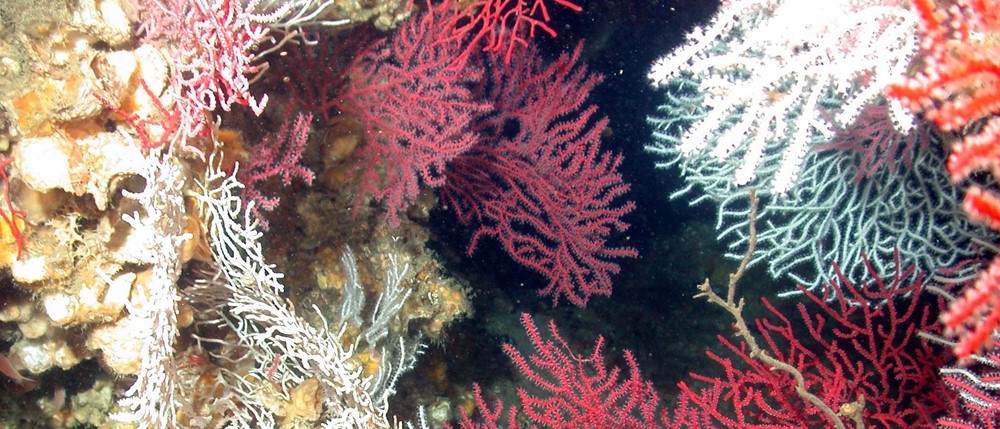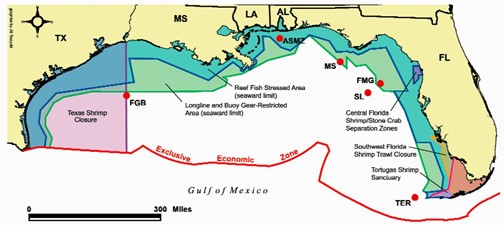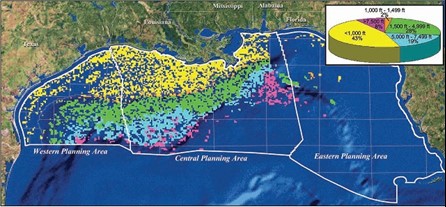
Hard Bottom Reefs of the West Florida Shelf
Along the edge of the West Florida continental shelf exists a broad band of drowned reefs or fossil reefs at water depths ranging from approximately 50 m to over 120 m (roughly 150 to 360 ft). These paleo reefs are important ecologically as areas of high biodiversity and as source areas supporting the spawning aggregations of the more economically important reef fish species of the southeastern United States. Yet virtually nothing is known of these ecosystems. Given the potential for human-induced threats to these habitats from fishing impact, oil and gas exploration and development, and water re-diversion projects, the need is acute to identify and classify the area into spatially and temporally specific regions.
Because the shelf-edge reef habitats of the West Florida shelf have been fished for over 100 years, benthic communities and habitat features have experienced direct and indirect or incidental impacts that have affected their productivity. Direct effects include damage from anchors, longlines, and trawls. Indirect effects may include trophic cascades resulting from the removal of top-level predators like groupers and snappers from the system or removal of ecosystem engineers. Thus mapping these areas using acoustic techniques, such as side-scan sonar and multibeam imagery and ground truthing habitat diversity and quality using ROV is imperative. Acoustic maps coupled with collection of sediment and biological samples provide the geomorphological basis on which benthic habitat characterization can be developed.
Protecting Offshore Reefs in Marine Protected Areas
Marine protected areas (MPAs) of one type or another have been around for millennia, especially where artisinal fishing occurs. They have been implemented throughout US waters as a means of improving fishery production and reversing the trends that ultimately have led to overexploitation of so many U.S. fished stocks.

They can be important tools in fisheries management and particularly in protecting biological diversity. Yet they remain quite controversial. Indeed, a tremendous controversy arose among different user groups over establishing marine reserves in the N.E. Gulf of Mexico, despite a long history using spatial management as a tool (see A Review of Gulf of Mexico Marine Protected Areas).
Despite the controversy, a number of marine reserves and marine protected areas have been established. We have been involved in site selection, establishment, habitat characterization, and demographic studies in a number of these, including the Madison Swanson and Steamboat Lumps Marine Reserves, the Tortugas Ecological Reserves, the Florida Middle Grounds Habitat Area of Particular Concern, and the Pulley Ridge Habitat Area of Particular Concern in the Gulf of Mexico. On the Atlantic, we focused on the Oculina Experimental Reserve off Florida's east coast.
Oil Platforms in the Gulf of Mexico
Most deep-sea research in the Gulf of Mexico has targeted areas important to the oil and gas industry -- the areas captured in this figure of active oil platforms. This research has resulted in significant contributions to the discovery and in some cases the protection of hard bottom and deep-sea reefs. In contrast, the eastern Gulf of Mexico remains relatively unexplored. In fact, it is perhaps the least explored region of the Gulf. Therefore, there is a limited amount of data on their distributions and importance to fisheries productivity.


